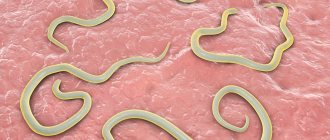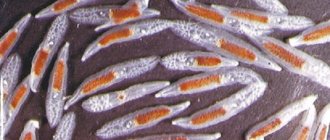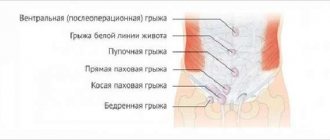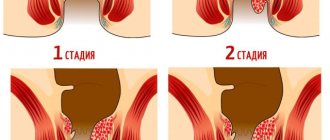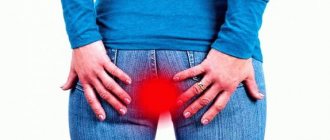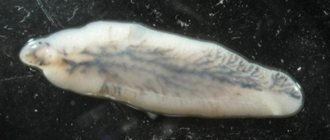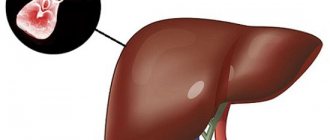Nematodes are one of the most common helminths that parasitize the human intestine and cause enterobiasis.
A characteristic symptom of infection is severe itching in the perianal area, worsening at night and in the evenings. Pinworms are parasitic worms of the nematode class. They are dioecious individuals. The body length of the female is a little more than a centimeter, the male is about half a centimeter. Their bodies are spindle-shaped and white in color. The life cycle of a pinworm is about a month. It begins to develop with the fertilization of the egg and ends with the formation of a sexually mature individual.
Life activity of parasites in the environment
If we talk about how long pinworm eggs live outside the human body, then this process is influenced by many factors. Under favorable conditions, pinworms can survive outside humans for up to 3 weeks. These include:
- air temperature not less than –8°С and not more than +10°С;
- sufficient humidity;
- temperate climate.
If all the above conditions coincide, individuals can exist calmly in the environment, but this does not apply to adult females, whose life outside of humans is impossible.
It is possible to reduce the vital activity of eggs of individuals if you follow certain rules. During treatment, it is necessary to reduce the humidity in the room. All dirty laundry must be washed at a temperature not lower than +60°C - with this machine wash mode, parasites die in 10 minutes.
Development of pinworms in the human body
Scientific studies have shown that the life cycle of pinworms is activated as soon as the eggs laid by the female enter the intestines. From this moment the incubation period begins, which can last a considerable time, from a month or longer. At this stage of maturation, they are preparing to enter the body’s nutritious environment.
The female, entering the large intestine, begins active egg-laying activity. The process occurs mainly at night and in the anal area.
The pinworm development cycle does not imply the presence of intermediate hosts. They appear as a result of human interaction with the environment.
When pinworm eggs are laid on the surface of the folds of the anus, vagina, underwear or urethra, the female uses a special fixing “glue”, which causes constant itching in the perineum and anus.
Parasites of this group can lay eggs of more than 12 thousand individuals at a time. After about a week they are ready to be born.
Pinworms can then easily occupy new territories, which include underwear, hygiene and general use items, and food. This helps them continue to exist. Unwashed hands when in contact with the mouth provide a 100% guarantee that pinworms will re-enter the body and continue to multiply.
If you suspect enterobiasis, it is extremely important to wash your hands frequently, especially before contact with children and the upcoming meal.
The question of how long pinworms live in the human body is answered by scientific research. Typically, their lifespan is about 20 days. The entire life cycle, from fertilization to death of the worm, can last up to 13 weeks. During this time, a person who does not take the rules of personal hygiene seriously may become infected with parasites more than once through contact with them. This usually occurs with an uncontrollable desire to scratch the area of the body where the larvae of individuals live.
The scientific scheme of the life cycle of pinworms implies 7 stages through which these individuals pass:
- a person becomes infected with pinworms by ingesting eggs;
- parasite larvae attack the intestines;
- adults develop;
- sexually mature pinworms colonize the intestines;
- females crawl out of the anus at night;
- lay eggs;
- Larvae appear and develop.
In rare cases, people notice the results of the life activity of pinworms until the females emerge from the anus and begin laying eggs. Only at this stage can the existence of parasites end due to the actions of the person himself.
Parasitic pinworm worms live in the human body and cause enterobiasis, a disease characterized by unpleasant symptoms. Few people are interested in the life cycle of pinworms, although this has a direct impact on the possibility of infection and further treatment of the disease.
What are pinworms
The disease caused by pinworms during reproduction is called enterobiasis. Pinworms are divided into two types: Enterobius vermicularis (lives in the human intestine) and E. Anthropopitheci (in the body of chimpanzees). There is also a third species, which differs from the previous two in the size of the spicule. According to the ICD10 code, enterobiasis is classified as B80.
Worms often live in countries with a humid and warm climate. Pinworms parasitize the lower parts of the small intestine and large intestine of humans.
Pinworms are a type of parasite - roundworms of the nematode family. The worms look like a thin white thread, their ends are pointed, which gives them the name “pinworm.” They are white in color. Worms are bisexual. The size of the female exceeds the size of the male.
When helminth eggs enter the mouth and further into the digestive tract, the life cycle of the worms begins. Having reached the lower region of the small intestine, larvae are released from the eggs, which go through the maturation stage and begin to reproduce. After mating, the males die and are excreted along with the feces. Females continue their cycle, located in the upper part of the large intestine. After bearing the eggs, the female lays eggs in the folds of the anus (this is a feature of pinworms).
To lay eggs, the female emerges partially from the anus at night and lays about 13,000 eggs. After this, when the clutch is laid, the female dies. And clutches of eggs can end up on the toilet rim, bedding, clothing, toys and other household items and can continue to live there for up to three weeks.
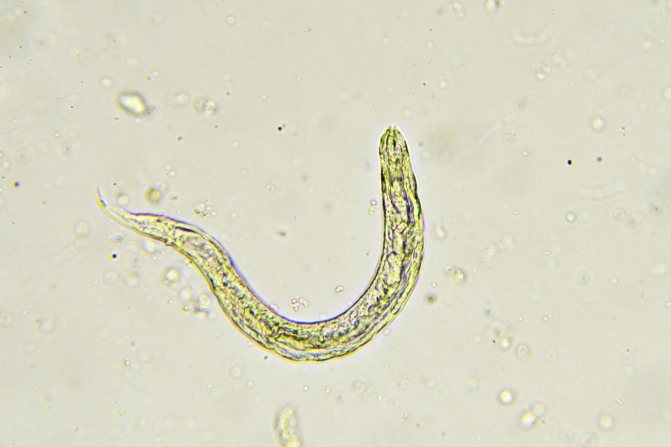
During the laying of pinworm eggs, a person may experience itching, and the eggs may end up under the nails, and if a person does not wash their hands, the eggs enter the oral cavity, and a new life cycle of helminths begins.
To maintain viability, eggs need a moist and warm environment - this can be reservoirs, sewers, the surface of plants, they also survive on the fur of animals. The death of pinworms is possible at high temperatures, in the absence of moisture, but they tolerate frost well (they remain viable at minus 8 for about 18 hours).
Reproduction of parasitic individuals
Having penetrated the human body and sensing a favorable environment, the parasites begin their journey to the intestines, which is an ideal place for the development of the population. It is in the walls of this organ and its cavity that their further existence occurs. They mainly feed on feces and, in extreme cases, blood, which can be obtained from the intestinal walls.
The fertilization process occurs in the cecum or small intestine. Naturally, only the female can continue the genus of this type of nematode, which, with sufficient accumulation of eggs, is sent to the rectum of an infected person. At night, she crawls out to lay eggs in the anus and genitals. This concludes its life cycle.
The main symptom of infection is itching in the anal area, caused by the laying of eggs by the female. If this symptom occurs, you should consult a doctor as soon as possible.
Over a long period of development, parasites can affect a person’s quality of life. Endless and unpleasant itching in the anal area disrupts night's sleep, especially when it comes to small children. Babies may also experience minor abdominal pain and causeless irritability due to infection. Due to frequent scratching of the pinworm habitat, scratches can occur, which often lead to dermatitis of bacterial origin.
Diagnosis of enterobiasis
Diagnosis is not difficult; scraping or imprinting with adhesive tape from the skin of the perianal area reveals pinworm eggs. The effectiveness of the test is maximum in the morning before going to the toilet. Stool analysis does not reveal pinworm eggs.
We recommend reading: Basil: beneficial properties and contraindications, benefits and harms of basil
Routes and sources of infection
Pinworm infection occurs through the fecal-oral route. After helminth eggs are transferred to the oral cavity, pinworms penetrate the human body and begin to multiply. In this case, the patient infects other people by touching household objects (contact-household method).
The disease can also be transmitted through a handshake. Sometimes autoinvasion occurs, when helminths re-enter the patient’s body, resulting in the disease developing further.
It is possible to become infected with pinworms:
- when scratching an itchy area near the anus, while pinworm eggs remain on the hands and under the nails;
- when shaking the laundry, eggs that are there may be swallowed;
- through a handshake;
- through household items, clothing;
- from animal fur, where eggs got in with dust;
- through food on which the eggs were found with the help of flies;
- repeatedly when the patient infects himself due to poor personal hygiene.
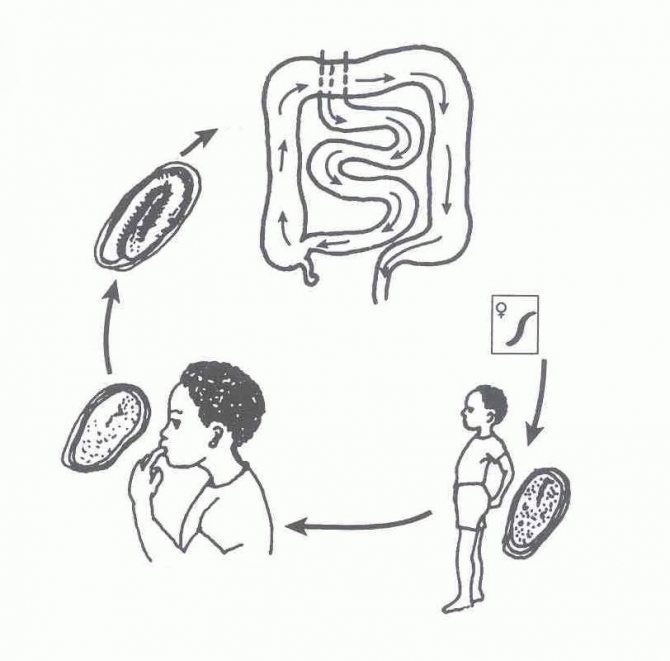
Symptoms and course of enterobiasis
The main symptom of pinworm infection is itching in the anal area, especially at night. The itching is caused by an allergic reaction to egg laying and the presence of an adult in the perianal area.
Helminthiases and herbal medicine
Risks and benefits of using herbal remedies, folk and alt.
Parasitic diseases in childhood
Parasitic diseases in childhood. General information.
Infection occurs by ingestion of eggs. In the small intestine, larvae hatch from the eggs, and pinworms attach with their mouth opening to the mucous membrane, irritating it. Sexually mature female pinworms, filled with eggs, descend into the large intestine, then into the rectum. Eggs are laid in the anal area (in the so-called perianal folds), sometimes on the skin of the buttocks or nightwear/bed linen. The lifespan of pinworms is only 20 days, some “champions” live up to 40. Eggs remain invasive (infectious) depending on external conditions from several hours to several months. They are resistant to most environmental influences and chlorination, but quickly die under high insolation. Therefore, the prevalence of enterobiasis is significantly lower in countries with hot, dry climates.
The following drugs have been proven effective:
What is a baby pinworm?
Adult and child pinworms are the same parasite, which belongs to the group of roundworms. It is distinguished by a spindle-shaped shape, similar to a short thread (about 1.5 cm in length). Male pinworms are always smaller than females.
The worm received the name pinworm due to the structural features of the female’s body - its back part is slightly pointed, similar in appearance to a needle.
To prevent pinworm infestation of a child, parents should know the characteristics of this parasite - how it is transmitted, its life cycle and how it is treated.
Children are more likely than adults to become infected with pinworms. This is due to non-compliance with the rules of personal hygiene and contact with contaminated household items. The life cycle of pinworms is very simple, the only carrier is humans.
You can become infected from animals if there are eggs on their fur, and after contact with them the child does not wash his hands with soap.
There are three main ways of infection:
- domestic;
- oral;
- contact.
No one is safe from helminthic infestation. Children are most susceptible to infection. Children's pinworm is more common than others and provokes the development of enterobiasis. This is not the most severe form of invasion, however, if it is ignored, serious complications will develop.
With timely provision of medical care, the child will quickly get rid of uninvited guests.
What to do in such a situation? To get started, we recommend reading this article. This article describes in detail methods of controlling parasites. We also recommend that you consult a specialist. Read the article >>>
Life cycle of pinworm
The female lays eggs around the anus, since this process is accompanied by itching, the baby regularly scratches this place. This is how the eggs get under the nails and they spread. Failure to comply with personal hygiene rules contributes to the proliferation of pinworms.
After swallowing pinworm eggs, they enter the intestines and degenerate into larvae, which in turn grow to mature individuals and reproduce. Males die after mating and are excreted along with feces. Worms feed on the contents of the intestines, as well as blood.
Several thousand helminths can simultaneously parasitize the human intestine. In just a month from the moment of mating, the female begins to lay eggs. To do this, it gets out of the intestines at night. One female can lay up to 20 thousand eggs, which take 6 hours to mature.
Eggs get on underwear and bedding, under nails, spread throughout the house along with dust, and are found on household items and toys - this contributes to regular infection of a person.
You can become infected from animals if there are eggs on their fur, and after contact with them the child does not wash his hands with soap.
How does a pinworm develop?
How long can pinworm eggs survive outside the intestines? Their viability lasts about 3 weeks, during which a person becomes infected with enterobiasis. It is not the eggs that migrate from the small intestine to the area of the large intestine, but already hatched individuals that reach sexual maturity in about 10 days.
We recommend reading: Fecal stones in the intestines: causes, symptoms and treatment
How long do parasites live in the intestines? The total lifespan of the worm is about 1 month. The survival of the species is due to the large number of “offspring” and the ease of infecting humans. The life cycle of female pinworms ends immediately after they lay eggs.
Life
After being introduced into the body, the worms are localized mainly in the small intestine, where their growth, development and fertilization occur. After this, the parasite moves to the large intestine and cecum, where conditions for the parasite are suitable for further residence. They are localized in the large intestine, where pinworms live until they die.
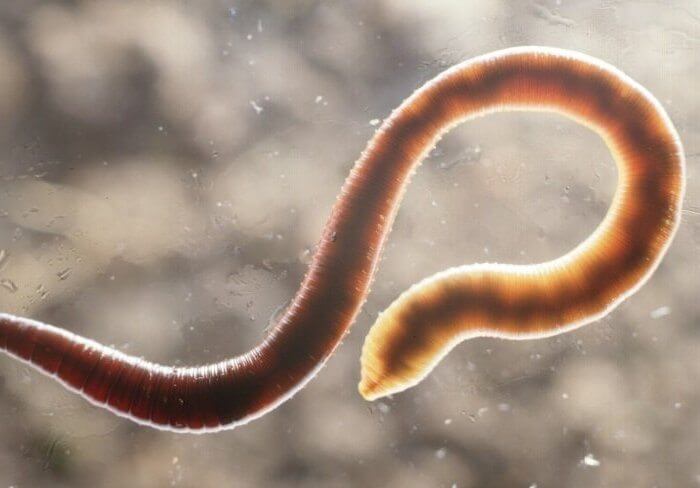
The pinworm development cycle literally reaches 14-21 days, sometimes the parasite can live up to a month. During this time, females lay several thousand eggs, which hatch and give birth to new offspring.
It will also be interesting: Pinworms: dangerous or not for humans
Life cycle of helminth
To effectively combat worms of this form, you need to know how long pinworms usually live outside the human body, how long they live in the intestines and what is the life expectancy of such parasites at the initial stage of formation, i.e. in the egg. This will allow you to choose the right treatment regimen. It is not without reason that most doctors recommend repeat therapy some time after the main course. Thanks to this feature, it is possible to destroy the young offspring of helminths, which appear from eggs previously laid by the female.
The offspring penetrates the human digestive system as a result of re-infection of the body: while scratching the anus due to persistent itching, the person then carries eggs into the oral cavity on the fingers and nails. As a result, the neoplasms are sent directly to the intestine (small section), where larvae appear and move into the large intestine.
As they move locally, 2 molts are observed, which result in adult worms. The development cycle of pinworm parasites is short. It will take about 1 month from the moment the eggs appear until the formation of sexually mature individuals.
Treatment
Therapy for helminthiases involves systemically ridding the body of worms. Treatment of pinworms in children consists of three stages:
- Preparations for treatment.
- Destruction of sexually mature individuals.
- Restoration of the body after a complex of procedures.
Before treating a small patient, a course of preparatory therapy is carried out, including local remedies. Gentle herbal preparations such as Allahol are used together with pumpkin or linseed oil.
At the second stage, sexually mature individuals are removed from the body using synthetic medications, preventing further reproduction of the parasite.
At the final stage, rehabilitation measures are carried out to restore gastric and intestinal microflora in children, destroyed as a result of exposure to antibacterial drugs.
The general course of therapy to finally cure a small patient includes a large complex of vitamins, micro- and macroelements lost as a result of the life processes of pinworms. Diet is prescribed as an auxiliary therapy tool.
How does infection occur?
Pinworms are transmitted only from person to person, which occurs when eggs are swallowed or sometimes when they enter the rectum through the anus. The eggs themselves are hardy and can remain viable (i.e. infective) in a moist environment for up to three weeks.
Once the eggs are initially laid on the skin near the anus, they easily spread to other surfaces. The shell of the eggs is sticky, as they come out of the female along with mucus, thanks to which they are easily attached to nails, fingers, night clothes and bed linen. From here they additionally end up on food, water, furniture, toys, toilet lamps and other household items. Pets often carry eggs in their fur, but cannot become infected themselves. Dust containing eggs can become airborne and disperse violently when lifted from a surface, such as when bedding is shaken. This way the eggs can be inhaled into the mouth and nose and be swallowed later.
But it has been established that pinworms are not always born only inside the body of their host. Some of the pinworm larvae may hatch on the anal mucosa and migrate up the intestines to end up back in the same person's gastrointestinal tract. The severity of the consequences of this route of infection is not well understood. Despite the relatively short lifespan of pinworms (up to 13 weeks), if self-infection has occurred with the ingestion of eggs, or the migration of larvae back into the intestines, treatment is required again to get rid of them completely.
All family members, including adults and asymptomatic individuals, should be treated. This is necessary because many people with pinworms have no signs of infection. However, they will still spread eggs, which can then be spread to loved ones after their treatment. If one family member is infected, there is a very high chance that others will be infected as well. Thus, everyone needs treatment!
- taking medication to kill worms in the intestines.
- hygienic measures for cleaning eggs that may be located around the anus or in the house (clothing, bed, various surfaces).
The most effective and optimal drug today in terms of convenient treatment regimen and toxicity is mebendazole. It is suitable for people of all ages over 2 years old. All family members, including adults and those who do not have symptoms, should take the medicine at the same time. The first dose kills the worms. A second one (after two weeks) is sometimes necessary if the infection has not gone away completely, or re-infection has occurred with eggs that remained in the house. One dose for adults for enterobiasis is 100 mg.
Praziquantel is more gentle on the body, but less convenient to take. It must be taken for 5 days, but it is allowed even for children under one year of age. Other drugs containing active substances such as albendazole and levamisole are also effective against pinworms.
Drug therapy for enterobiasis
To cure pinworm infection, the doctor prescribes the following tablets to the patient:
1. Levamisole (Dekaris) is suitable for adults and children under 14 years of age. The dosage is calculated strictly according to the instructions; an overdose provokes migraines, nausea, convulsions and inhibited reactions. Contraindicated for pregnant and lactating women.
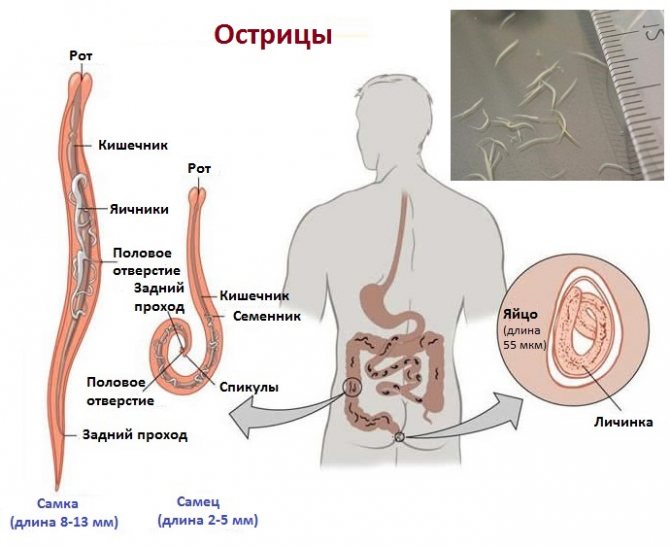
2. Pyrantel is a broad-spectrum anthelmintic. Taken once daily, suitable for children under 3 years of age and adults. The dosage is calculated according to the instructions; in case of an advanced form of the disease, it is increased, but only on the initiative of the attending physician. In case of overdose, the patient experiences headache, vomiting and nausea. Possible side effects: fatigue, urticaria, insomnia, irritability, abdominal pain.
3. Mebendazole is prescribed to adults and children over 2 years of age. Contraindicated for pregnant and lactating women. The drug is used only on the recommendation of a doctor, since an overdose provokes severe dizziness, flatulence, convulsions, liver dysfunction, allergic skin rashes, and swelling.
4. Carbendacim is prescribed for children and adults; pregnant and lactating women drink only under the supervision of a physician. The dosage of the drug is calculated strictly according to the instructions. There is no clinical evidence of overdose; side effects include allergic skin rashes, weakness and dizziness.
5. Piperazine is an inexpensive and effective drug against enterobiasis. Suitable for treating children from 6 months and adults. It is prescribed only by a doctor who independently calculates the dosage. It has a number of side effects: headache, severe nausea, general weakness of the body. In some patients it causes hallucinations, disturbances in vision and coordination. Taking Piperazine requires strict adherence to personal hygiene rules.

6. Nemozol is suitable for the treatment of adults and children over 2 years of age. Contraindicated in pregnant and lactating women, patients with hypersensitivity to the composition of the drug. The dosage is calculated according to the instructions only by the attending physician. Side effects include headache, vomiting, severe itching, increased body temperature and blood pressure.
7. Vermox is suitable for adults and children. The dosage is prescribed only by a specialist based on the severity of the disease and the condition of the patient. On the first day of taking Vermox, eating heavy food is prohibited, as this will significantly reduce its effect on the body.
8. Metovit is a broad-spectrum anthelmintic drug. Effectively removes parasites from the human body and at the same time eliminates the consequences of their vital activity. Taken on the recommendation of a doctor strictly in accordance with the instructions.
9. Zentel is an anthelmintic drug for the treatment of children. It is prescribed only by a specialist and taken in accordance with the instructions. Contraindicated in children with hypersensitivity to the composition of the drug.
To enhance the effect of taking medications, it is recommended to exclude foods that strengthen stool from the diet the day before the start of treatment. The next morning, take a pill, and in the evening take an additional laxative. These actions will speed up the removal of worms from the body.
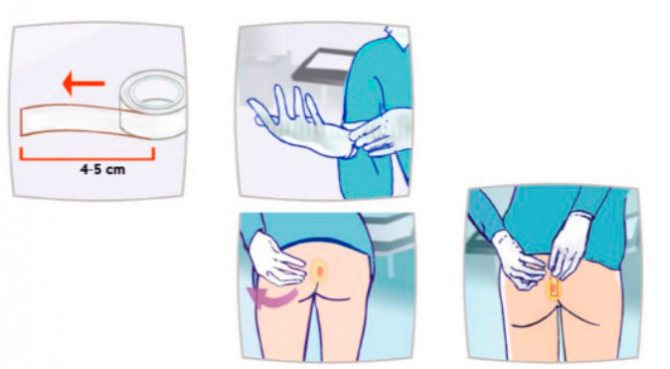
Another mandatory aspect is a repeat course of drug treatment after 12-14 days. The main goal is to remove parasite eggs, since during the initial administration of drugs they do not always come out completely.
If a patient experiences a symptom of pinworms such as severe itching, the doctor prescribes:
- Cetrin.
- Zodak.
- Loratadine.
Taxonomy
Three species are usually classified as pinworms (although the evidence base for identifying the third of them is questioned):
- Enterobius vermicularis Linnaeus, 1758
- Enterobius anthropopitheci Gedoelst, 1916
- Enterobius gregorii Hugot, 1983
We recommend reading: No-spa for pancreatitis: how to take, dosage
Among these three species, Enterobius vermicularis
parasitizes humans,
Enterobius anthropopitheci
parasitizes chimpanzees.
It was assumed that the causative agent of human enterobiasis is also the species Enterobius gregorii
, however, data from morphological and molecular genetic analysis do not confirm the legitimacy of identifying these pinworms as a separate species;
perhaps they represent only young representatives of the species Enterobius vermicularis
.
- Enterobius vermicularis Linnaeus, 1758
- Enterobius anthropopitheci Gedoelst, 1916
- Enterobius gregorii Hugot, 1983
How do pinworms enter the body?
Every year in Russia there are about a million cases of pinworm infestation. Infection with helminths depends on how well a person observes the rules of hygiene. The risk group includes young children.
Infection occurs in three ways:
- oral;
- contact;
- domestic.
Infection can occur after contact with objects on which worm eggs are present. Such items could be:
- handles in public toilets;
- handrails in transport;
- hands of an infected person;
- money.
After visiting public places where people gather, you must thoroughly wash your hands with soap. It is important to wash children's hands well after walking. It is necessary to ensure that children do not put anything in their mouths during walks.

Pinworms are carried by domestic animals. Parasites are found on their fur. Eating unwashed vegetables and fruits also carries a certain amount of risk.
How long do worms live outside the human body?
Quite often, sick people have the question of how long pinworm eggs live outside of humans. Worm eggs can survive outside the human body for up to one month. They enter the external environment through the bedding or underwear of a person suffering from enterobiasis, as well as through his hands and household items.
For the favorable existence of parasites, the following conditions are required:
- increased humidity levels;
- air temperature from 22 to 40 degrees.
How long a pinworm lives outside the human body depends on environmental conditions
Low levels of air humidity lead to the death of parasites, so in countries with hot climates the risk of pinworm infection is minimal.
In direct sunlight, worm eggs die within half an hour. You should not use chlorine-containing substances as disinfection - they have no effect on pinworms. It would be advisable to boil the contaminated laundry, and after it has dried, iron it well.
Disinfection of large household items that cannot be washed is carried out by washing them with strong detergents. Carpets, curtains and pillows can be taken out to the balcony under the sun's rays. Environmental conditions influence how long pinworms live outside the body.
Treatment of pinworms
Treatment of enterobiasis in adults should be complex, multi-stage. Self-medication is unacceptable; consultation with a doctor is required to prescribe medications in the correct doses.
Destruction of worms with special anthelmintic drugs: the drugs “Piperazine”, “Pyrantel”, “Vormil”, “Vermox”, “Nemozol” are used. These medications are taken in the morning. It is recommended to eat light and liquid food per day to prevent diarrhea and better absorption of the drug.
Also in the evening, after taking antihelminthic drugs, you should take a laxative: “Pilokals”, “Senade”. A prerequisite for treatment is to repeat the course of drugs after 2-3 weeks.
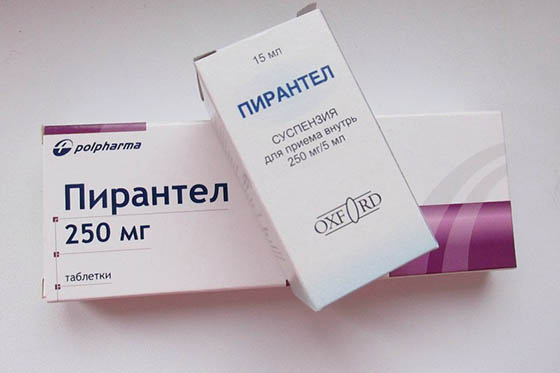
For severe itching, antihistamines (Cetrin, etc.) are recommended.
The patient and his family must follow a number of hygiene rules:
- Always wash your hands after using the toilet, before eating, and after going outside.
- Frequent change of underwear (morning and evening).
- Iron your laundry thoroughly every time after washing.
- Apartment cleaning (daily, wet and dry).
- Keep your nails short.
Enterobiasis is a fairly serious disease, so self-medication must be avoided. A doctor's consultation and the use of individually selected therapeutic treatment regimens are required.
Symptoms of infection
Pinworms are a type of white helminth, in which the rear tip of the body is slightly raised upward and curved in the shape of a hook. Males measure up to 5 mm in length, while females reach a maximum of 12 mm.
Pinworms do not cause significant damage to the body, but certain symptoms and troubles do occur in humans. Infection is expressed by the following symptoms:
- itching in the anal area, which usually occurs at night;
- restless sleep in children;
- bowel dysfunction;
- vaginal discharge if helminths penetrate the genitals;
- increased nervousness.
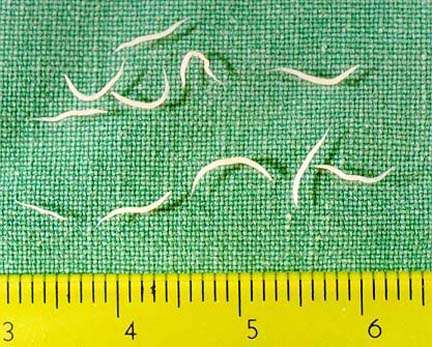
If you continue scratching for a long time, irritations form on the skin, through which a secondary infection can penetrate. Worm eggs can accumulate under the nails, which contributes to their spread.
The presence of pinworms in the human body for a long time can lead to a disease such as enterobiasis. It is especially dangerous when it becomes chronic. Enterobiasis develops after worm eggs enter the gastrointestinal tract through the mouth.
Enterobiasis is accompanied by the following symptoms:
- due to the long presence of pinworms in the human body, inflammation of the small and large intestines occurs;
- if helminths end up in the peritoneum, the risk of developing peritonitis increases;
- if it gets into the vagina, vulvovaginitis may occur;
- if the parasite penetrates the lungs or nasal passages, surgical intervention will be required;
- Sometimes helminths can provoke inflammation of appendicitis.
In order to prevent enterobiasis from becoming chronic, it is important to undergo a full examination and begin treatment at the first suspicion of this disease.
Symptoms of the disease in women
Signs of pinworms in adults appear after infection after 2 weeks. The most common are:
- itching near the anus, more often it occurs at night, but with severe infection, the itching bothers you constantly - at any time of the day;
- sometimes pinworms can be found in feces;
- in women with a significant number of parasites in the intestines, itching is also caused in the perineum;
- inflammation may occur after scratching;
- pain in the intestines periodically occurs;
- at times there is diarrhea, the presence of mucus in the stool;
- insomnia and irritability are observed;
- allergic reactions.
In advanced situations, scratching can lead to bacterial infection, purulent inflammation of the skin, the patient’s general condition deteriorates greatly, the temperature rises and paraproctitis may develop. What does prolonged infection without treatment lead to, is it dangerous?
If left untreated, the following may occur: intoxication of the body, exhaustion, and fatigue. In women, when pinworms introduce harmful microorganisms into the genitals, endometritis or vulvovaginitis develops. Some patients develop helminthic infestation, when hemoglobin levels may decrease.
Get tested for pinworms
Diagnosis of the disease
Female pinworms lay their eggs in the anal area, so to detect them, a smear is taken for analysis in this place.
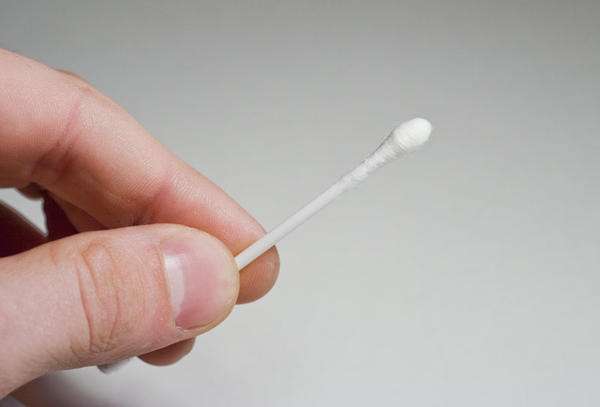
In addition, the patient may be prescribed a blood test. When the body is infected with parasites, the level of eosinophils in the blood will be exceeded.
Stool analysis can show the presence of certain types of helminths in the body, but pinworms cannot be detected in this way. These parasites lay eggs outside the rectum.
Pinworms are a type of white helminth, in which the rear tip of the body is slightly raised upward and curved in the shape of a hook. Males measure up to 5 mm in length, while females reach a maximum of 12 mm.
Let's work together to make the unique material even better, and after reading it, we ask you to repost it on a social network convenient for you. net.
Determination of pinworms in adults
To establish a diagnosis of enterobiasis, several diagnostic methods are used:
- Identify key symptoms: itching at night, loss of appetite, weakness.
- Analysis of stool for pinworm eggs. This method is not informative enough. Therefore, other methods are additionally used.
- Scraping in the anal sphincter area. To do this, scrape off the contents of the area near the anus with a cotton swab.
- Imprint of the anal sphincter area. This method uses adhesive tape, which is glued to this area, then glue the tape onto glass and look under a microscope.
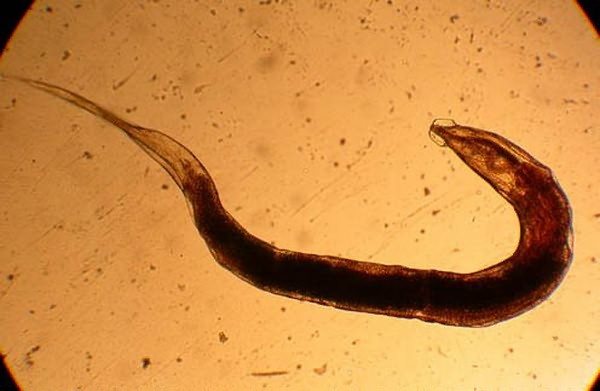
Tests should be done at least 2 times for a more accurate result, with an interval of 2 weeks.
